Your CRM software harbors a treasure of opportunities as it has a ton of valuable information about your prospects and customers. However, companies often fail to use it to the maximum potential. Ultimately, the data ends up being buried under those spreadsheets, untouched. But just imagine this scenario…
You purchased a party dress for your wife a few days back. Today morning, the same brand sent you an email displaying matching footwear and earrings to go with it. Wouldn’t it be a great experience? That’s how personalization works and CRM software can help you in applying it in your email marketing strategy.
Before getting into the how, let’s take a look at the why of using CRM data to personalize your email campaigns.
Advantages of Personalized Email Communications
Most of you must be familiar with the usefulness of personalized email campaigns. It’s no secret that personalization helps improve the customer experience at many levels. Still, let’s quickly brush up the basics.
1. Personalized email communications add a human touch to your brand
Personalization of any kind (be it as simple as addressing the user by the first name) makes the emails more humanized. You can even add a face to the sender’s name.
2. It will help build stronger connection with the recipients
By sending personalized emails, you can strengthen the relationship and build trust with the recipients. If you are in the B2B or SaaS sector, it becomes all the more important to send personalized emails.
3. You can increase the conversion rate by sending personalized offers
You can get insights into the user’s past purchases through the CRM. Accordingly, you can send relevant emails with personalized offers that would get more customers.
4. It boosts customer loyalty
As you can send more relevant offers, it will help retain the customers. They will be keener to purchase from you again, which will boost the customer loyalty and their lifetime value.
5. It gives you an edge over competitors
Effective usage of CRM data will help you tailor the emails according to the customer’s preferences.
That being said, let’s see how you can use CRM data to personalize your emails.
1. Send emails based on the prospect’s stage in the buyer’s journey
Your prospects are not at the same stage in the buyer’s journey. Some might be at the top of the funnel in the awareness stage while others at the decision stage or bottom of the funnel. So, naturally their purchase intent and interest will be different. You cannot send the same emails to them. CRM data can help you figure out their position in the funnel based on the source of entry, time elapsed to their first interaction, the kind of inquiries, and the resources visited or downloaded. CRM tools like Marketo and Salesforce come with a lead scoring model. It allows you to reach out to the prospects with relevant emails based on their previous interactions. These software programs also have features like AI-driven predictive analytics. They predict the next action and help in sending targeted emails accordingly. This feature is beneficial for eCommerce marketers who want to send stock replenishment emails to their customers.
Take a look at this stock replenishment email by Chewy.
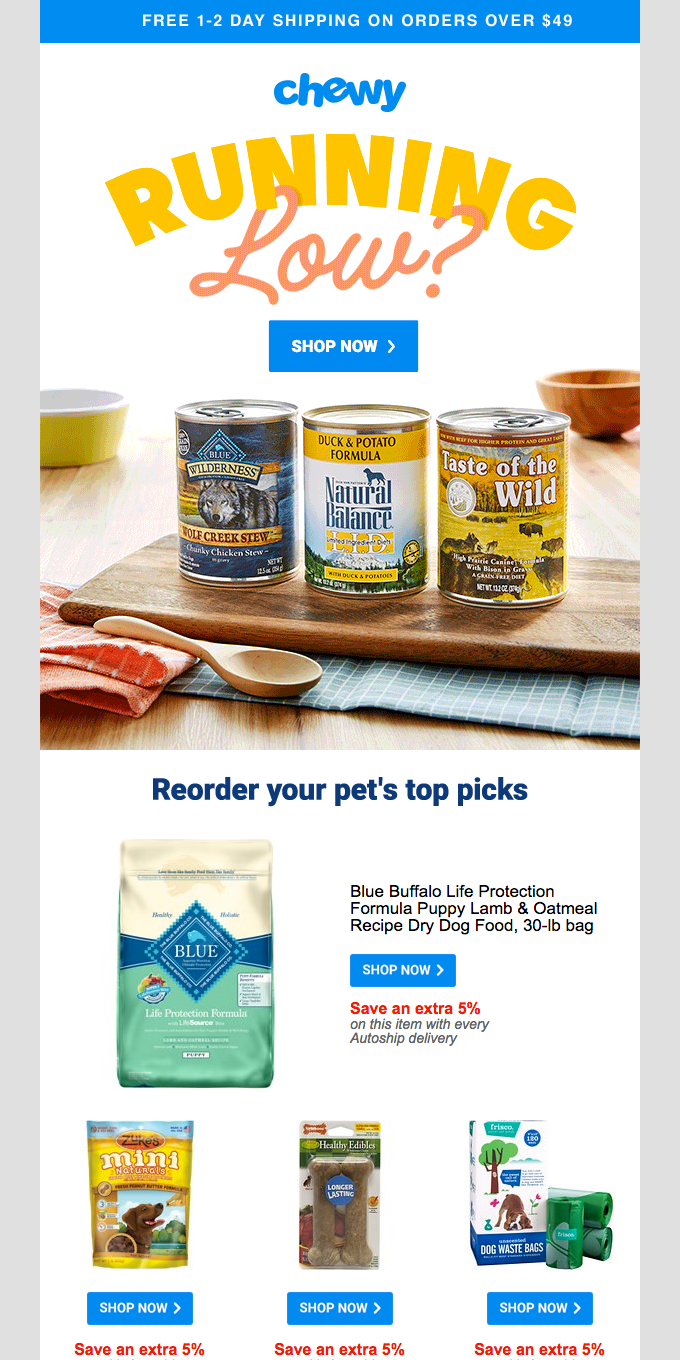
2. Carry out customer retention strategy with upsell email campaigns
Customer retention is one of the most powerful business growth tactics. Instead of focusing only on customer acquisition, you must also keep tabs on the existing customers. Take help of the CRM data and target them with emails in accordance to their past interaction. For instance: If someone has purchased the basic version of your product, you can upsell the premium plan and give them access to more advanced features.
Take a look at this email by Calendly. They have informed the reader that their free trial ends the next day and encouraged the users to upgrade the plan.
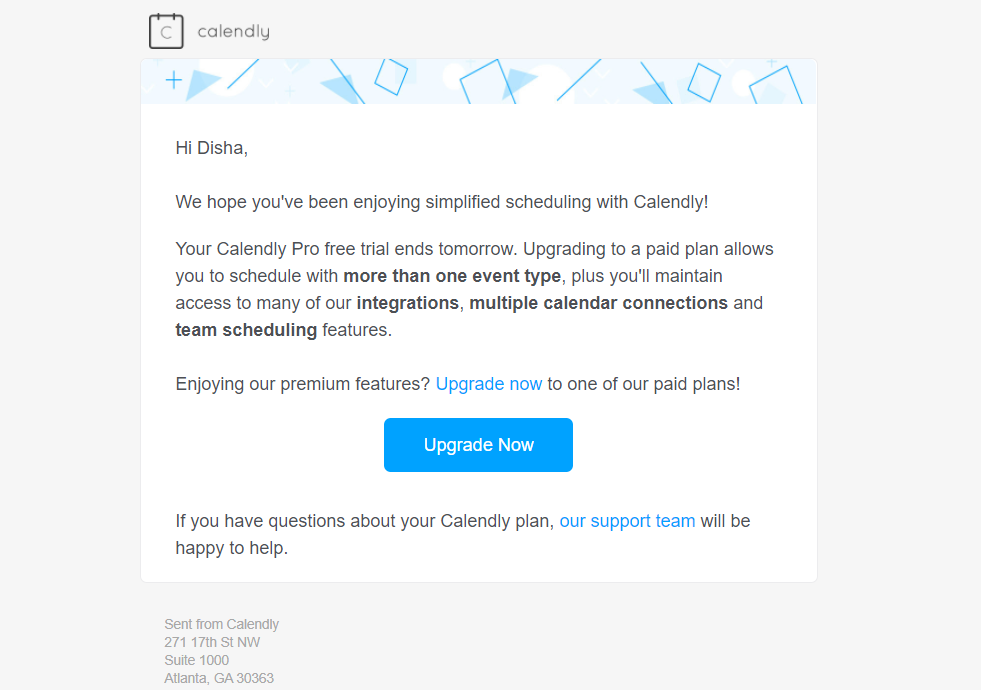
3. Send discount offers to frequent buyers
If you are in the eCommerce sector, you must send discount offers to the frequent buyers. Let them know that you value their association. You can even use CRM data to gamify the entire experience for them. Consider having different levels of the customer relationship starting from bronze to platinum. For example: if someone spends $400-500 per month on your store, give them the bronze membership. Likewise, if someone spends more than $2000-2500 each month, add them to the platinum tier.
Here’s an example from Carnival Cruise Line that shares an exclusive offer to the frequent travelers in the VIFP club.

4. Give a leg up to your business with referral emails
Referral marketing strategy serves two purposes: Helps to acquire new customers and retain the existing ones. It also helps in building strong relationships with the customers. The reason being that the prospects trust their family and friends more than the claims of the brand. If a customer advocates your brand in front of their friends, you are more likely to get a conversion. Referral marketing is incentivizing the customers for spreading the word.
The CRM tool will allow you to identify the most active users. They are the best target audience for the referral program who are most likely to be evangelists for your brand.
Just make sure that the incentive is useful for the referee and referral alike. The invitation process should be easy to understand and execute. Include forward to a friend link in the email or social media buttons so that the user can easily share your offer.
Check this email by Maude that follows all the best practices of referral email marketing. See the CTA followed by social sharing links that makes the entire referral process a breeze.
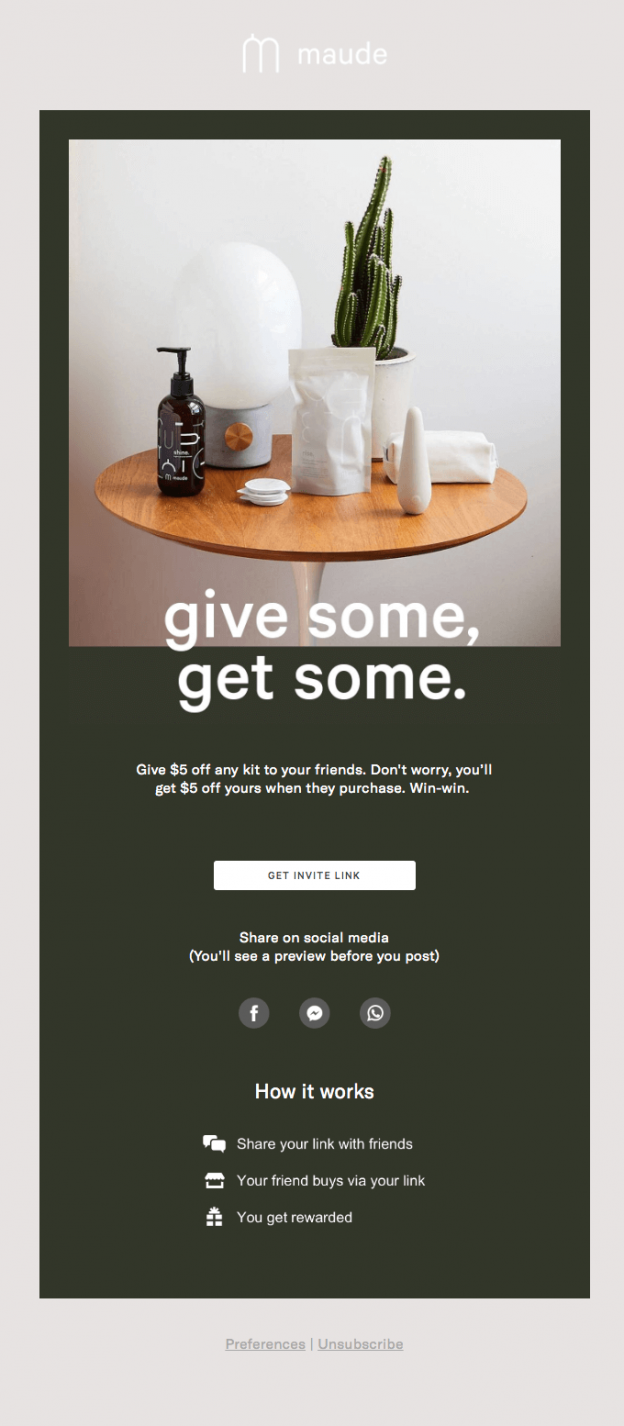
Allow the users to get real time notifications for the referral process. Once someone refers a user, send them a heartfelt note of gratitude. Keep track of the invitations sent and acknowledge their efforts.
5. Set automated workflows for birthdays and other milestones
Use the CRM data to track the customer’s important days like birthdays, anniversaries, and culturally relevant Holidays. Send reminder emails to wish them on such occasions. To make things easier, set automated workflows to be triggered on those special days. Besides the customer’s special days, you can even send emails on milestones you achieve. For instance: When a customer completes one year with your brand or you achieve 100k customers or you complete a decade of being in business.
Here’s how Nike sends an email to celebrate the user’s birthday month and incentivizes them to shop the new arrivals.

6. Revive the dormant leads with personalized re-engagement emails
The CRM system will give you insights into how the subscribers are engaging with your emails. Based on this data, you can revive the leads who haven’t opened or clicked-through your emails through the last three to six months. Customer churn is something that you can’t avoid but you can surely reduce it with re-engagement marketing strategy.
You can get insights into the reason for inactivity from the CRM tool. According to that information, you can segment the subscribers into different lists. Then, reach out to them with relevant emails. For instance: If the pricing is an issue for the subscribers, let them know the value your products will provide. On the other hand, if the lack of features is the reason for dormancy, notify the prospects once you introduce that functionality in the tool. Alternatively, you can also send update emails and inform the readers that you are constantly working on improving the product.
Clear sends the perfect re-engagement email notifying the readers about their improved security and coupon code.
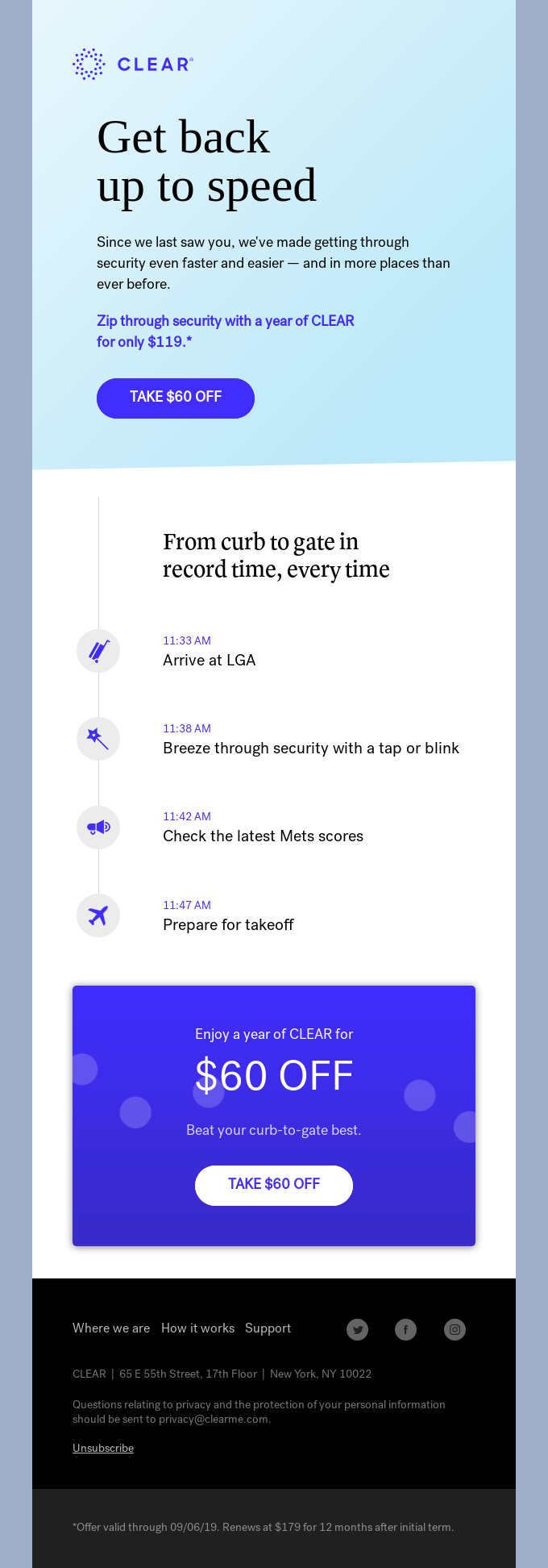
Wrapping Up
CRM is the powerhouse of conversions, if used correctly. Most people just see the tip of the iceberg when it comes to the CRM features. So, if you are looking forward to personalizing your email campaigns more effectively, explore more and see what you can do for hyper-personalization.
In case you need help in using advanced CRM tools like Salesforce and Marketo to send personalized emails, our experts are at your service.


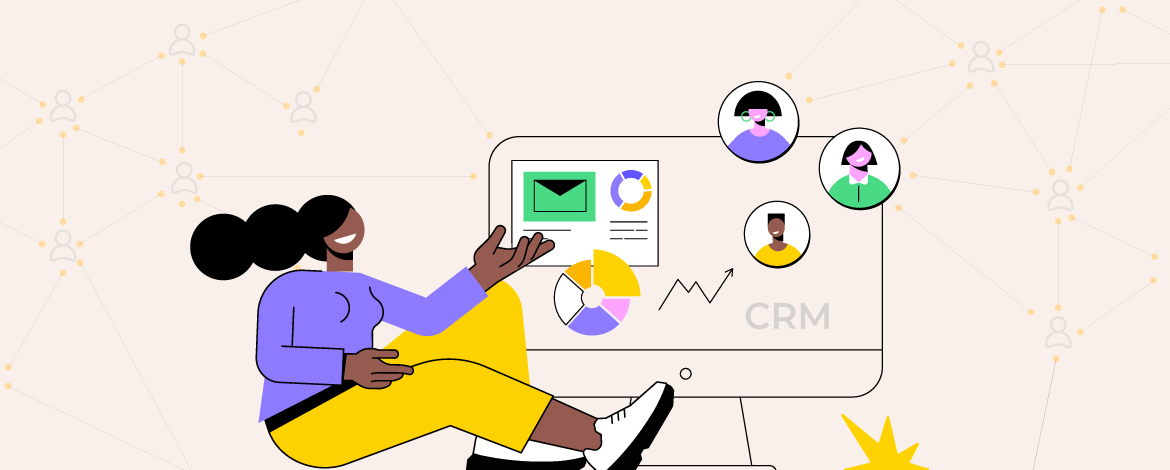

Disha Bhatt (Dave)
Latest posts by Disha Bhatt (Dave) (see all)
A deep dive into the 4 primary elements of SLDS
How to Use the Right Color Combinations to Create Visually Attractive Emails